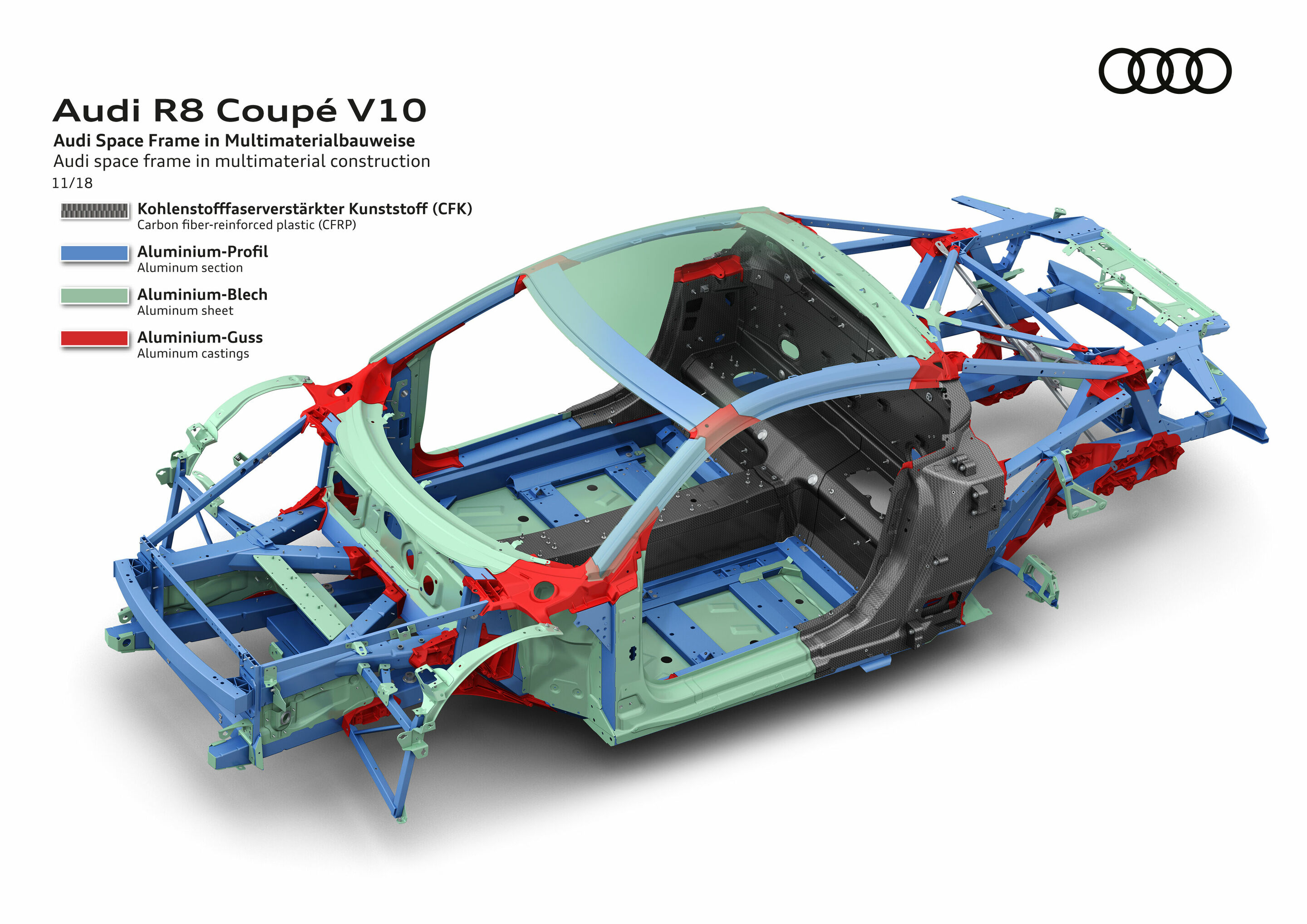Audi Space Frame (ASF)
Back to overviewThe body is designed as an ASF structure (Audi Space Frame) and forms the basis for the strict lightweight design concept of the Audi R8. The body of the Coupé weighs just 200 kilograms (440.9 lb), that of the Spyder weighs eight kilograms (17.6 lb) more. Large parts made of carbon fiber-reinforced polymer (CFRP), such as the rear panel, the center tunnel, and the three-piece B-pillars, form the ultra-high-strength and almost torsion-free backbone of the passenger cell. They account for a 14 percent share of the ASF.
The front and rear body modules of the new Audi R8 are constructed of aluminum (79 percent share of the ASF) from semi-finished goods that include castings, profiles and sheets. The cast nodes can absorb great forces and offer great versatility and design freedom. The extruded sections form the framework of the front and rear body modules. The floor of the luggage compartment is made of sheet aluminum, and it serves as a shear area that improves crash properties. The outer skin of the new Audi R8, including doors and lids, is produced entirely of sheet aluminum.
The high torsional rigidity of the multi-material ASF forms the basis for the precise handling, high crash safety and smooth vibration characteristics of the high-performance sports car. The side sills, A-pillars and windshield frame of the R8 Spyder in the ASF were given targeted reinforcements.
The equipment, data and prices specified in this document refer to the model range offered in Germany. Subject to change without notice; errors and omissions excepted.
